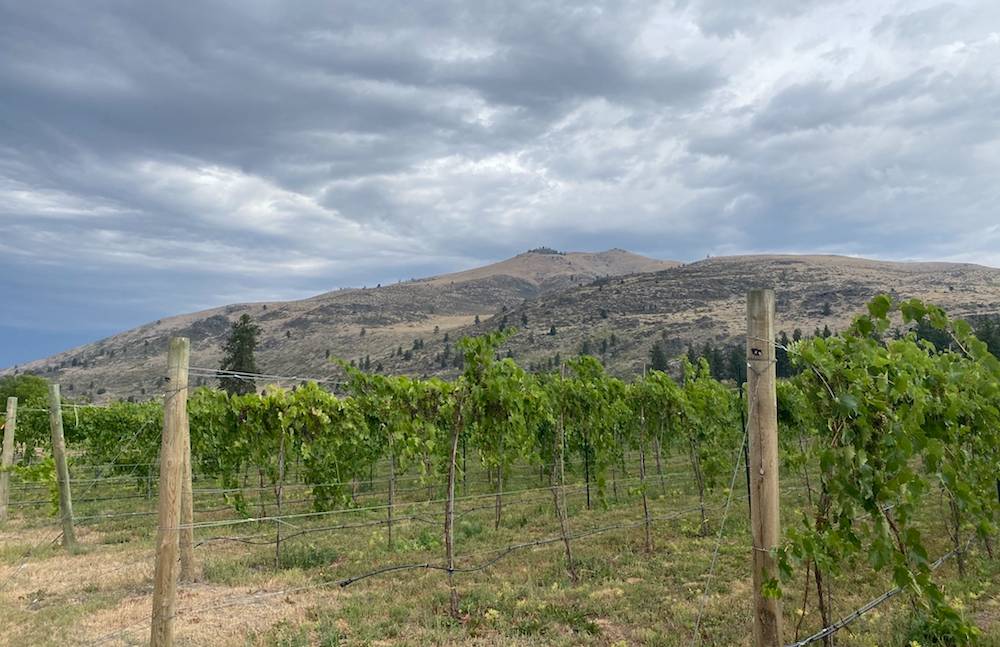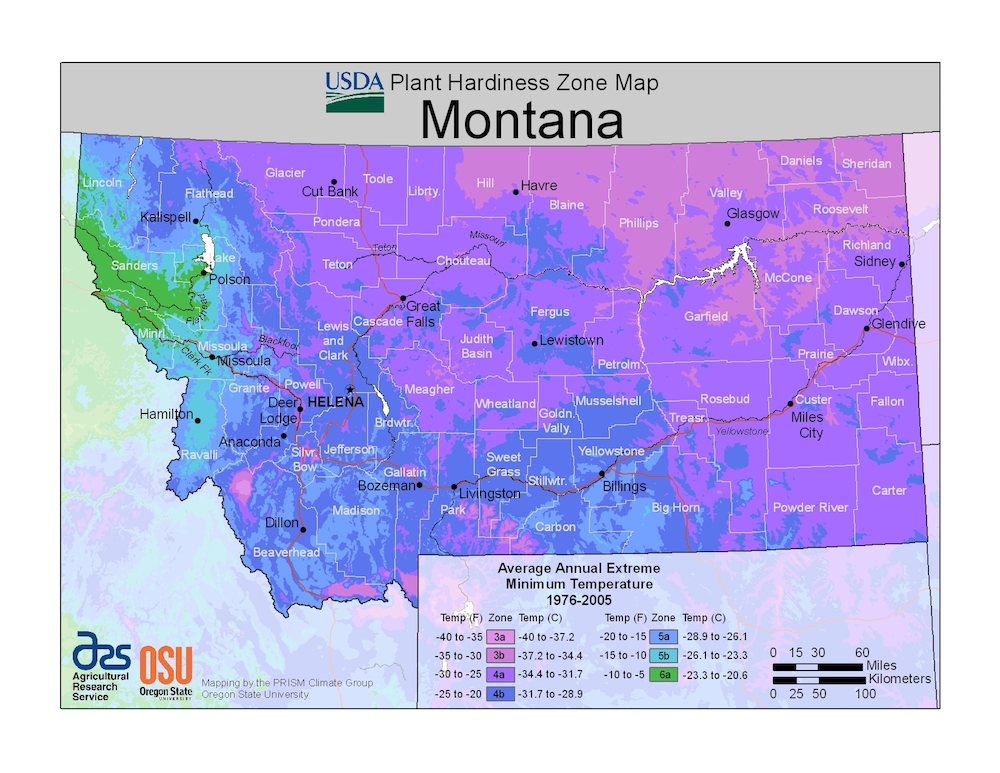Vineyard Site Selection

Watchdog Winery's vineyard (pictured above) is located in something of a hot spot near Dixon, a climatic rarity in western Montana.
Cold-hardy grapes can thrive in Montana, but only on favorable sites. The site will determine the soil type and local climate, which will determine the success of the vineyard. Appropriate site selection is the single most important part of the decision-making process in planning your new vineyard.
Soil Types
Cold-hardy grapes can grow in a variety of different soil types, but they do best in deep, slightly acidic to neutral pH soils with sufficient drainage, often provided by gravelly or sandy soil structures. Avoid heavy clay soils, or soils with shallow and impermeable pans, poor drainage, or high salt content (“The Production of Grapes & Wine in Cool Climates,” Jackson & Schuster, 1994). The best way to find out what type of soil you have is the NRCS web soil survey and through digging into the soil and observing its structure. Avoid highly alkaline soils (pH>8.2). Soil acidity and alkalinity, which is measured by pH, determines the availability of nutrients to the vine. A soil test or pH meter can measure this, and you can find more detailed info regarding soil pH, its relationship to nutrient availability, and ways to alter soil pH on Washington State University’s guide on Vineyard Nutrient Management.
Climate
The two key climate considerations for a site are 1) sufficiently warm growing seasons to ripen grapes and 2) winter temperatures that are moderate enough to avoid damaging the dormant vines. Also important are the risk of frost after budbreak and frequency of mid-winter warm spells that can start to bring the vines out of dormancy too early, exposing them to high risk of cold damage.
Growing Degree Days (GDD)
The warmth of the growing season is measured using growing degree days, or GDD, which represent “a daily measure of heat that is physiologically useful to a grapevine, typically calculated as the average temperature of the day above 50 F” (“Wine Grape Vineyard Site Selection,” Dr. Duke Elsner, Michigan State University Extension, 2016). Cold hardy grapes typically require 1700-2000 GDD base 50°F to ripen. In Montana, the average annual GDD (base 50°F) ranges from 300 to 3000. USPEST.org provides a helpful online tool to calculate growing degree days based on weather stations near your site. The Montana Climate office’s website also provides site-specific info on GDD and trends over time. (Note: This site is in development and is a bit clunky, but you can select GDD in the menu on the right of the map, click on a site, and it will provide the GDD over multiple years. Use the adjustment bar in the layers option to allow the map layer with towns and roads to be more visible.)
Minimum Winter Temperatures
Montana’s average winter low temperatures range between Zones 3 and 4 on the USDA Hardiness Zone Map. Cold hardiness varies considerably among the cold-hardy grape varieties. While it’s important to pay attention to which cultivars will succeed in your growing zone and what challenges you may need to plan for throughout your growing season, it’s equally important to take into consideration your specific area’s climate (and your growing area's mesoclimate) when deciding on cultivars to plant and protection measures to take.
Mesoclimates
A mesoclimate refers to the effect specific site’s geographic or man-made features — like slopes, trees, or shelterbelts — have on the general climate conditions of an area (Jackson & Schuster 1994). The main considerations are avoiding low areas (e.g. river bottoms) where cold air will sink and increase risk of frost; and taking note of large bodies of water or rock, as they will hold heat and moderate temperatures. For example, the latter is why cherry orchards in Montana are mostly located on the shores of Flathead Lake. When choosing a site for your vineyard, you’ll want to spend at least one year observing the patterns of temperature, sun exposure, wind, frost susceptibility, and any other notable effects the weather might have on the site as a result of its terrain and surroundings. An ideal mesoclimate is one that provides sufficient warmth (GDD) and sunlight throughout the season with some natural protection against high winds and frost.


